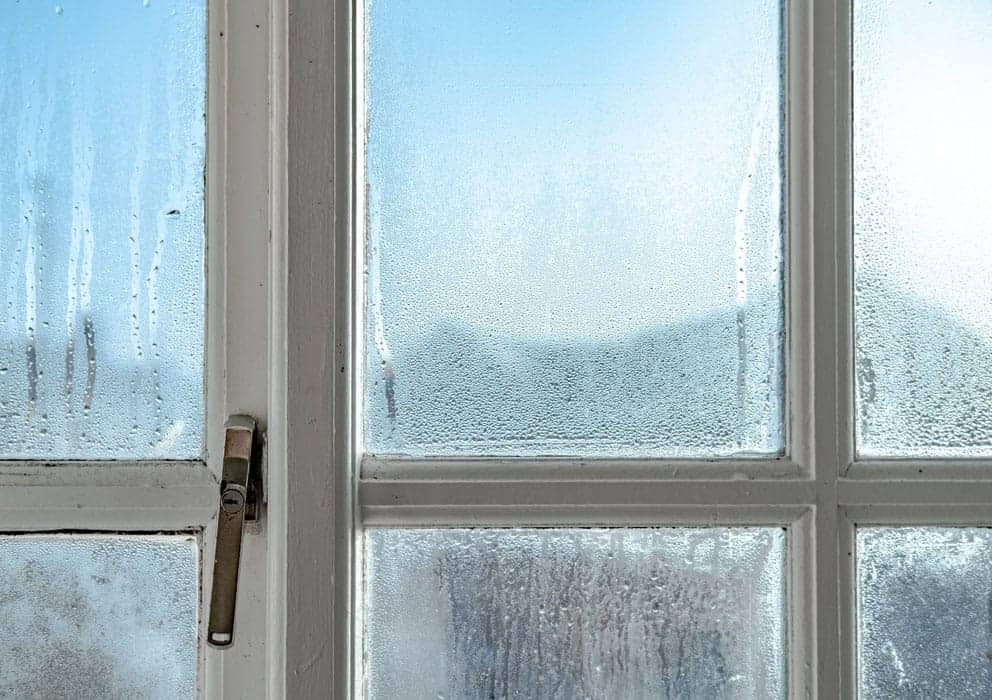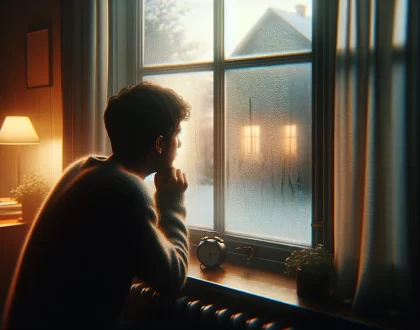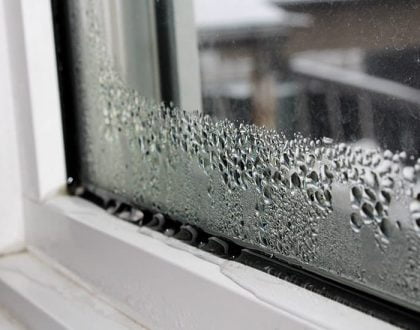Why Are My Windows Wet Every Morning?

Wet windows aren’t anybody’s idea of fun. Unfortunately, they’re a sight many people wake up to every single morning. After a few days of wiping them down and soaking up small pools of water on your windowsill, you’ll no doubt start to wonder what’s behind it.
So, why are your windows wet every morning? In this post, we’ll take a closer look at the contributing factors and how to put things right.
Why are my windows wet?
There’s no two ways about it – windows get wet because of condensation. This occurs when moisture condenses onto a surface, turning from a gas into a liquid. When it sits on your windows, it makes them appear misty, and can eventually roll down onto the windowsill where it will gather as a small pool of water.
As you can imagine, there are various problems that wet windows cause. First and foremost, they’re unsightly. Windows let natural light into your home and should give you a nice view of the outdoors. That’s hindered significantly by large clouds of mist on their surface.
The moisture can cause further issues when it rolls down your windows onto the sill. Over time, the water can stain your windowsill or even seep into them and weaken the structure. Short term, it can also cause damage to any photos, ornaments or cards you have sat on your windowsill.
Why is it always the morning?
The next question posed by many people is ‘why are my windows wet every morning’? In many cases, your windows will be clear – or mostly clear – throughout the day. So why do they always seem to mist up overnight?
The answer is the temperature. Even in the coldest weeks of winter, most of us will turn our heating off at night to save a bit money on our energy bills. A thicker duvet and cosy pyjamas are usually enough to keep you sufficiently warm while you get your 40 winks.
But while you’re away in the land of nod, the air inside your house gets cold – we’re sure you’ve noticed when you wake up to that classic morning chill. Cold air doesn’t hold as much moisture as warm air, so that moisture looks for somewhere to go.
That’s paired with the moisture you release as you sleep, with an estimated 40g of water vapour generated through breathing and sweating at night. If there’s no way out – such as ventilation through an open window – that moisture is drawn to cold surfaces in your house. In most cases, windows are the first port of call.
Unless they’re particularly thermally efficient, the internal surface of your windows will become cold throughout the night. The temperature drops outside and there’s very little to stop that cold chill passing through to the inside of your windows.
This is why single glazed windows will invariably be wet in the morning, but double-glazed windows are by no means exempt.
How to stop windows becoming wet
After reading why windows become wet in the morning, it’s easy to think the only solution is to keep your heating on overnight. That would keep the air warm to hold more moisture, as well as warming the inside of your windows, preventing moisture from building up. However, it would also be very expensive and pretty uncomfortable – a heated room plus a duvet can result in a pretty sweaty night.
Another option would be to keep your windows open, providing ample ventilation so moisture can escape. In contrast to the first idea, this would make your home bitterly cold through the night and even harder to heat up in the morning.
That said, ventilating your house throughout the day can reduce the amount of moisture that’s trapped inside and mitigate wet windows to some degree. Opening a window or using an extractor fan while you’re cooking, showering and bathing are some of the easiest ways to reduce moisture levels.
But to actually eliminate the problem of wet windows in the morning, you’ll also need to tackle the second part of the problem – the windows themselves…
Improving your windows’ thermal efficiency
Cold, thermally inefficient windows are a magnet for condensation. They’ll likely become wet in the morning even if you try your best to ventilate your home throughout the day. That leaves you with one option – fixing the windows.
Naturally, many people will think they need to replace their windows to improve their thermal efficiency. This is one way of preventing them becoming wet. However, it’s also very expensive and disruptive to your home.
As well as the disruptive installation process, new windows can cause disruption to your home’s character too. That’s especially true if you live in an older property, which is why window replacement is prohibited for listed buildings.
Fortunately, secondary glazing provides a more practical solution. Fitted to the window’s internal recess, the discreet secondary panel creates an effective seal to keep out moisture. This extra layer also stops the inside of your windows from getting too cold, which stops the moisture from building up on its surface.
There’s no impact whatsoever on the existing windows, so it doesn’t actually affect the look and feel of your home. That’s why Historic England actually recommends the use of secondary glazing on older windows, with “no loss of historic fabric”.
Time to fix your wet morning windows
Sick and tired of wet windows every morning? We’re not surprised. Thankfully, secondary glazing is on hand to help. At Clearview, we offer a choice between professional installation or high-quality DIY secondary glazing kits.
Our technicians have researched condensation and acted on advice from the Insulation Glazing Association and the Ministry of Public Building and Works. We can confidently say that our secondary glazing products eliminate or significantly reduce condensation on windows in the vast majority of cases.
To find out more, contact our team today – or get started with a free, no obligation quote.
Recommended Posts

How can I stop condensation?
06/02/2024

A Quick Guide to Reducing Condensation
15/01/2020

 10 Year Guarantee
10 Year Guarantee 5 Star Customer Reviews
5 Star Customer Reviews